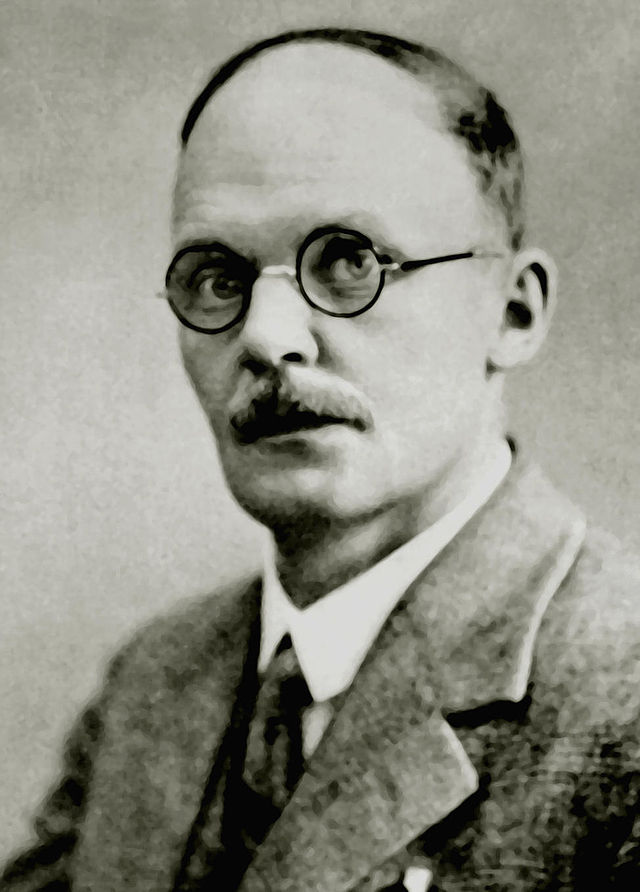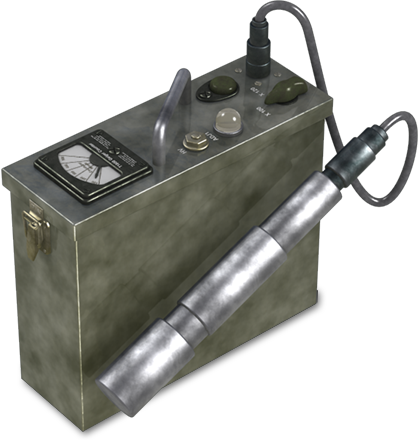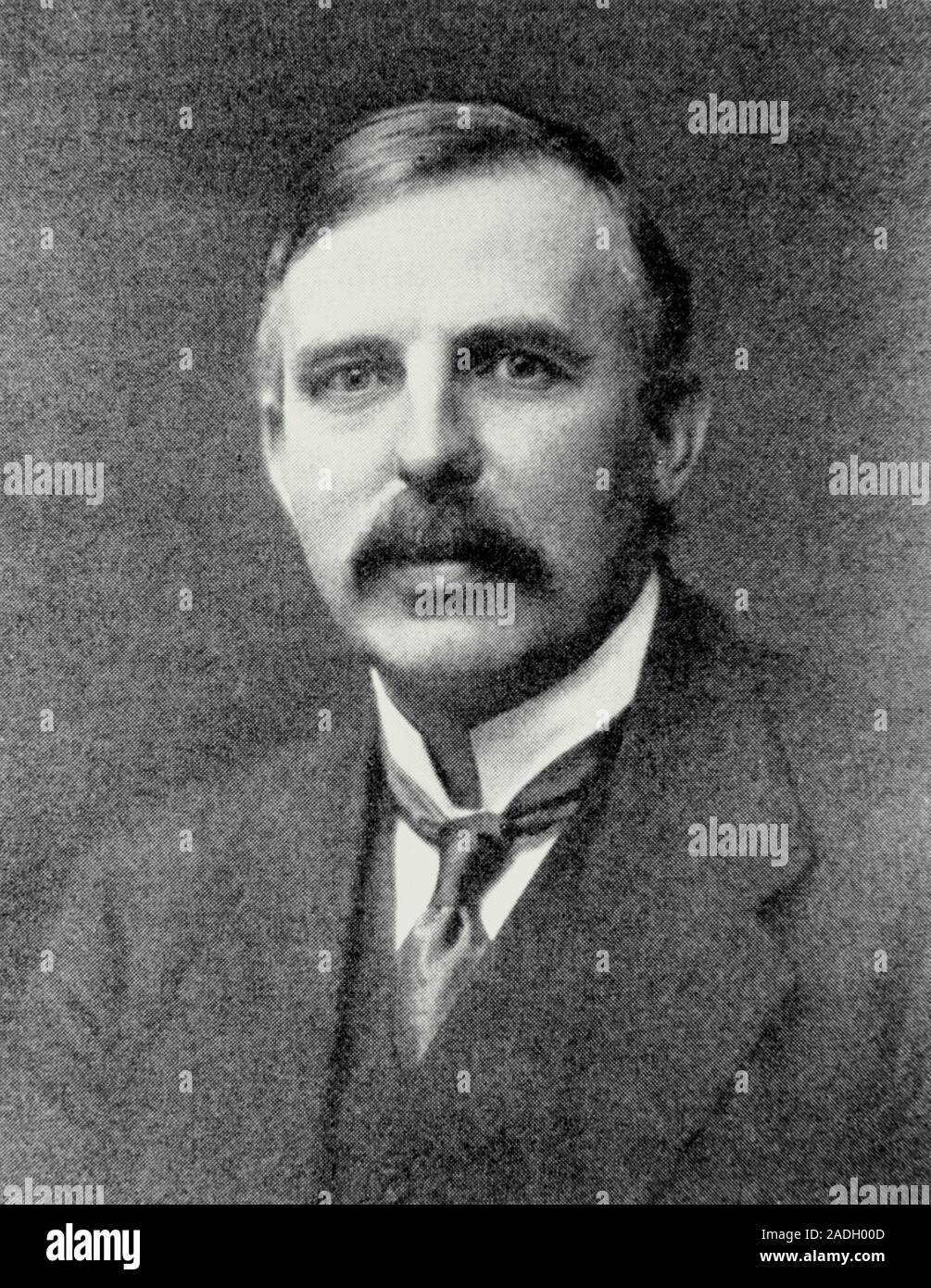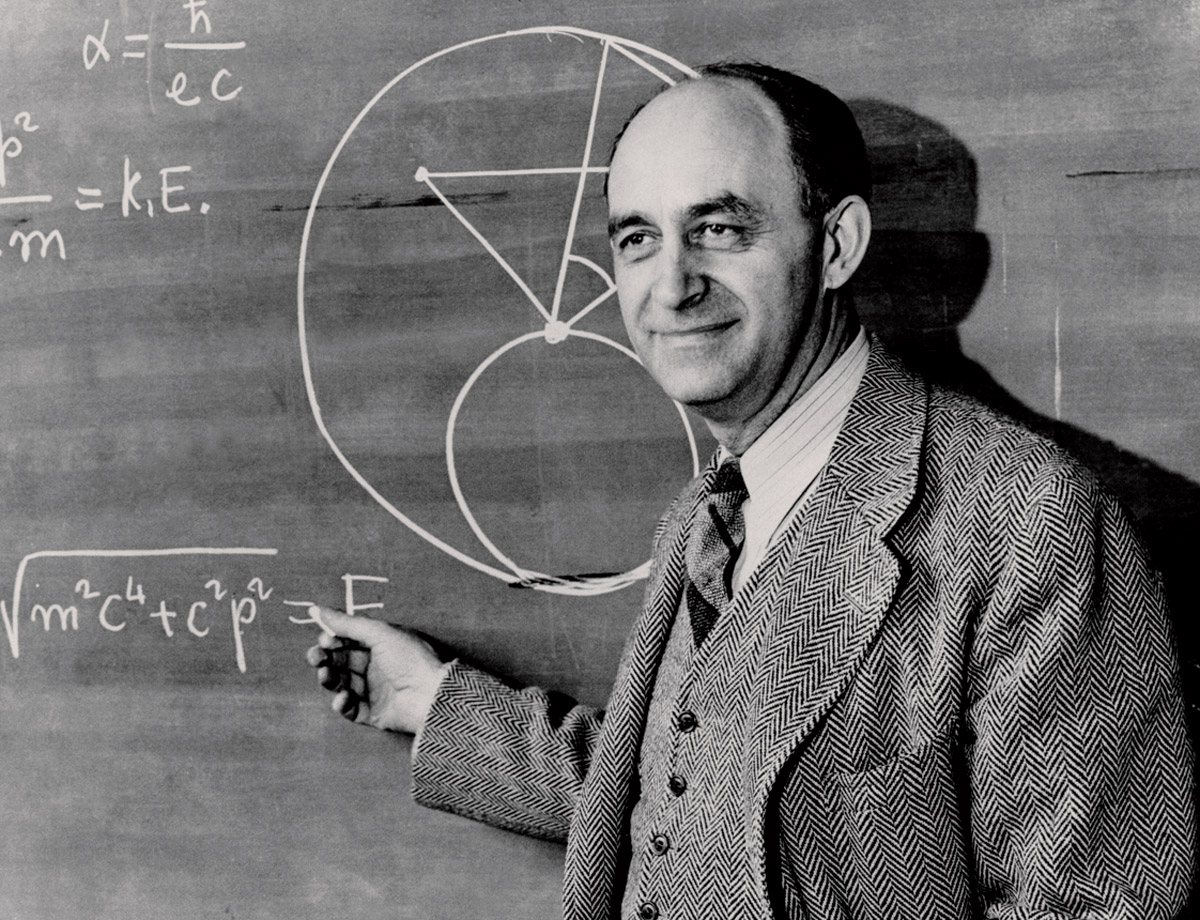Hans Geiger: Pioneering Physicist and Architect of the Geiger Counter
In the annals of scientific achievement, few figures have left such an indelible mark as Johannes Wilhelm "Hans" Geiger. Born on September 30, 1882, in Neustadt an der Haardt, Germany, Geiger's work transcended the boundaries of his time, laying foundational stones in the fields of nuclear physics and radiation detection. His name, synonymous with the iconic Geiger counter, represents not only a key technological advancement but also a profound legacy that continues to influence contemporary scientific practices.
Early Life and Education
Hans Geiger was born into an intellectually stimulating environment. His father, Wilhelm Ludwig Geiger, was a prominent Indologist and professor, which instilled in Hans an early appreciation for academic rigor and curiosity. This influenced his pursuit of education at prestigious institutions such as the University of Erlangen and the University of Munich. During his formative years, Geiger was drawn to the emerging field of physics, a discipline in the throes of groundbreaking discoveries and transformations.
In 1906, Geiger earned his doctorate with a thesis focusing on electrical discharges. This early work hinted at a future where he would probe deeper into the intersections of matter and energy. His doctoral research paved the way for his pivotal role in unraveling the mysteries of atomic structure.
Immersion in Atomic Research
Following his doctoral studies, Geiger moved to the University of Manchester, where he joined the laboratory of Ernest Rutherford, one of the leading physicists of the time. This collaboration proved to be a turning point in Geiger’s career. Rutherford, known for his pioneering work on the structure of the atom, recognized Geiger's potential and engaged him in experiments that would soon redefine the understanding of atomic science.
Geiger's most celebrated contribution during this period was his involvement in the famous gold foil experiment. Alongside Ernest Marsden, Geiger assisted Rutherford in experiments that involved bombarding thin sheets of gold with alpha particles. The outcomes of these experiments led to the revolutionary Rutherford model of the atom, proposing a dense, positively charged nucleus surrounded by orbiting electrons. This model shattered the then-prevailing plum pudding model and set the stage for contemporary atomic theory.
The Birth of the Geiger Counter
Amidst these groundbreaking developments, Geiger also pursued parallel lines of inquiry that would result in one of his most well-known inventions—the Geiger Counter. Designed to detect and measure ionizing radiation, this innovative instrument transformed the ability to observe and quantify radiation, a radical achievement in both scientific research and public health.
The early versions of the Geiger counter were developed with the assistance of Walther Müller, which led to its formal recognition as the Geiger-Müller counter or simply the Geiger counter. The device operates on the simple principle of ionization of gases within a tube, with the ionization events producing a detectable signal—often the iconic "click" associated with radiation measurement.
This instrument proved indispensable in myriad scientific endeavors, ranging from nuclear physics research to broader applications in geology, health physics, and even space exploration. The Geiger counter remains a fixture in many labs and field sites, attesting to Geiger's lasting legacy in instrumentation.
Academic Contributions and Legacy
Beyond his inventions, Hans Geiger's academic journey brought him back to Germany in 1912, where he accepted a position at the University of Kiel, later transitioning to other esteemed institutions like the University of Tübingen and the University of Berlin. Throughout his career, he was a prolific researcher and advocate for the forefront of nuclear physics.
Geiger’s scientific contributions were not limited to hardware innovations. His work within the field of nuclear physics helped elucidate the properties and behaviors of radioactivity—a pursuit of paramount importance especially during the early 20th century when the applications and implications of radioactivity were still being uncovered. Geiger's contributions provided frameworks that supported the nascent understanding and operational mechanisms of radioactive elements, thereby guiding future research and policy in safe nuclear usage.
His efforts, alongside contemporaries, led to the foundational layers of nuclear science, establishing vital precepts for quantum physics and the subsequent exploration of subatomic particles.
As a scientist, Geiger navigated the rapidly evolving landscape of early 20th-century physics with an analytical mind and remarkable ingenuity. His ability to translate theoretical concepts into practical applications earned him numerous accolades and a lasting place in scientific history.
In the sweeping narrative of scientific discovery, Hans Geiger’s work exemplifies the transformative power of curiosity and innovation. His legacy is a testament to the potential of scientific inquiry to catalyze advancements that transcend temporal and disciplinary boundaries.
World War Influence and Scientific Challenges
As the specter of World War I loomed over Europe, the dynamics and priorities of scientific research were inevitably influenced by the demands of the time. Hans Geiger, like many scientists of his era, found himself navigating a landscape where scientific exploration was increasingly intertwined with national interests and military considerations. During the war, he served in the German Army, applying his expertise in physics to military technology and artillery improvements. This period, though challenging, underscored the growing relevance of physics in various aspects of technological and strategic development.
Following the war, Geiger resumed his academic pursuits, but the trajectory of his work was now subtly shifted by the evolving global context. The post-war years were marked by economic difficulties and political upheavals, particularly in Germany, which affected scientific institutions and funding. Nonetheless, Geiger's resolve and passion for research remained undeterred. His work continued to focus on radiation and its measurement, fields that held increasing importance as the world began to comprehend the power and potential implications of atomic science.
Refinement of the Geiger-Müller Counter
In the 1920s and 1930s, Geiger focused on perfecting his namesake device. The partnership with Walther Müller in 1928 led to significant improvements in the Geiger-Müller counter, rendering it more sensitive and efficient. These enhancements included a better understanding of the discharge process in gases and improvements in the electrical components, enabling the counter to detect even minimal traces of ionizing radiation with heightened accuracy.
This refined version of the counter expanded its utility beyond purely scientific circles, finding applications in varied fields such as medical diagnostics, environmental monitoring, and even mine exploration. The ability to detect and quantify radiation proved to be immensely significant in a world starting to explore the potential of nuclear energy and facing the Cold War's security concerns.
The widespread adoption of the Geiger counter also played a crucial role in public safety, helping to monitor environmental radiation levels and ensuring nuclear safety protocols. As such, it became a symbol of both scientific progress and societal protection, embodying the dual-edged power of nuclear technology to both benefit and threaten humanity.
Teaching and Mentorship
Beyond his research contributions, Hans Geiger was also a dedicated educator. His teaching career at institutions such as the University of Tübingen and later at the University of Berlin was marked by a commitment to fostering the next generation of physicists. Geiger's ability to simplify complex scientific principles and inspire curiosity made him a revered figure among his students.
He emphasized not only the importance of rigorous scientific methodology but also the need to remain inquisitive and open-minded in approaching scientific problems. His courses were known for encouraging critical thinking and creativity, both invaluable traits in scientific exploration. As a mentor, Geiger played a pivotal role in nurturing young talents who would go on to contribute significantly to physics and other scientific disciplines.
In building these academic communities, Geiger invested in creating collaborative environments that mirrored his own experiences with influential scientists like Rutherford. These interactions fostered cross-pollination of ideas, enriching the intellectual landscape of physics research and ensuring that his legacy extended beyond tangible inventions and encompassed the expansive horizon of scientific thought and inquiry.
Legacy and Recognition
As the 20th century progressed, Hans Geiger’s contributions gained growing recognition, not only within the scientific community but also among the broader public. His achievements were acknowledged through numerous awards and honors, reflecting the substantial impact of his work on both theoretical and applied physics. Despite these accolades, Geiger remained a figure grounded in his scientific pursuit, emphasizing humility and dedication over acclaim.
His legacy is observable not only through his direct contributions to radiation measurement and nuclear physics but also in the ways his methods and inventions facilitated future discoveries and innovations. The Geiger counter, with its ubiquitous click, became an auditory representation of radiation, a tool critical in areas ranging from atomic research to planetary exploration via space missions where radiation mapping is imperative.
Geiger’s work set critical precedents that propelled the era of nuclear science, influencing policy, public perception, and academic inquiry into the complex and powerful forces at play within atomic structures. Moreover, the institutionalized protection measures against radiation safety owe much to the groundwork laid by Geiger and his peers, highlighting a profound connection between his scientific explorations and tangible societal benefits.
In reflecting on Hans Geiger’s life and contributions to science, his story encapsulates the essence of a scientific journey driven by curiosity, resilience, and unwavering dedication. The principles and instruments he developed continue to reverberate across laboratories and teaching halls around the world, propelling ongoing advancements in understanding the material universe.
As we continue to grapple with the ethical and practical implications of nuclear technology and radiation, Geiger’s legacy serves as both a reminder and a guide—emphasizing the potential of science to seek truth, ensure safety, and contribute positively to human progress.
Challenges in Ethical Frontiers
As the field of nuclear physics advanced during the mid-20th century, the work initiated by Hans Geiger gained new layers of complexity, especially concerning ethical considerations. The power unlocked through atomic science, highlighted by the development of nuclear weapons and energy sources, ushered in an era where scientific innovation increasingly intersected with moral responsibility. Geiger's contributions, within this broader context, exemplified both the potential and caution required in nuclear exploration.
While Geiger himself focused primarily on instrumentation and measurement, the implications of his work extended into discussions about the societal consequences of nuclear technology. The Geiger counter, used for detecting and measuring radiation, became a critical tool in assessing nuclear hazards and ensuring safety protocols, a precursor to the more comprehensive debates around nuclear proliferation and environmental impacts.
This era of nuclear development broadened the dialogue surrounding scientific discoveries, urging both the scientific community and policymakers to consider long-term consequences. Geiger's developments in radiation detection underscored the necessity of reliable measurement when managing and implementing nuclear technologies, emphasizing the balance between innovation and precaution.
Influence on Future Generations
Hans Geiger's impact did not end with his lifetime but continued to shape scientific advancement and public understanding beyond his immediate contributions. The principles underlying his work with the Geiger counter have been refined and adapted, leading to newer, more sophisticated radiation detection technologies. These advancements empower ongoing research in diverse fields, from medical imaging to environmental science, illustrating the lasting relevance of his innovations.
Moreover, Geiger's legacy has inspired generations of physicists to approach scientific inquiry with a blend of curiosity and critical evaluation. The extent to which his methodologies and findings have embedded themselves in the pedagogical frameworks of physics education demonstrates the enduring nature of his influence.
Programs and institutions honoring Geiger's contributions continue to proliferate, championing the exploration of nuclear physics while emphasizing the ethical dimensions of scientific research. Conferences, seminars, and educational initiatives often pay homage to his work, fostering collaborative dialogues across disciplines that reflect the same interdisciplinary spirit heralded by Geiger.
Beyond Science: Cultural Impact
Hans Geiger's name, immortalized through the Geiger counter, transcended scientific boundaries, embedding itself in popular culture and public consciousness. The distinctive clicking sound of the Geiger counter has become emblematic of radiation detection, often depicted in media and literature as an auditory icon of invisible threats. This cultural embedding speaks to the powerful imagery associated with scientific tools and concepts, enriching both educational content and artistic representation.
Fictional narratives exploring radioactive themes, from post-apocalyptic novels to science fiction films, frequently incorporate the Geiger counter as a plot device, symbolizing the fragile balance between harnessing and guarding against atomic power. Such representations foster public discourse and awareness about the real-world implications of radiation and nuclear science, highlighting an ongoing dialogue between society and scientific advancement.
The Personal Side of Hans Geiger
While Hans Geiger's professional achievements are well-documented, understanding the personal dimensions of his life provides a nuanced perspective on the man behind the scientific tools. Known for his dedication to research, Geiger was also a committed family man and a mentor who valued collaboration and community in scientific endeavors. His personal values, rooted in integrity and academic excellence, influenced his approach to both scientific challenges and mentorship roles.
Geiger's interactions with colleagues and students are noted for their generosity and openness, often characterized by his willingness to share insights and nurture younger scientists. This commitment to fostering intellectual growth extended beyond immediate work, creating ripple effects throughout the scientific community that reinforced the collaborative ethos essential to groundbreaking research.
Despite the challenges and upheavals of his time, including the tumultuous periods marked by global conflict, Geiger maintained a steadfast adherence to the pursuit of knowledge. His ability to navigate complex scientific and ethical landscapes remains inspirational, and his personal resilience serves as a testament to the enduring spirit required for substantial scientific contributions.
Conclusion: Hans Geiger’s Enduring Legacy
Hans Geiger passed away on September 24, 1945, but his legacy continues to thrive, resonating throughout the realms of nuclear physics and beyond. His pioneering work, especially the development of the Geiger counter, serves as a cornerstone in both practical applications and educational contexts, securing his place as a pivotal figure in the scientific canon.
The ongoing use and adaptation of his innovations highlight the timeless nature of his contributions, bridging scientific epochs and changing technological landscapes. As new generations of scientists stand on the shoulders of pioneers like Geiger, the fusion of curiosity, insight, and ethical consideration remains vital—principles embodied by Geiger throughout his illustrious career.
In celebrating Hans Geiger’s achievements, we recognize not only the tools he crafted and the knowledge he uncovered but also the spirit of exploration and responsibility he championed. His enduring influence continues to guide and inspire those seeking to understand and harness the intricate forces that shape our material world and define the boundaries of human knowledge.











Comments